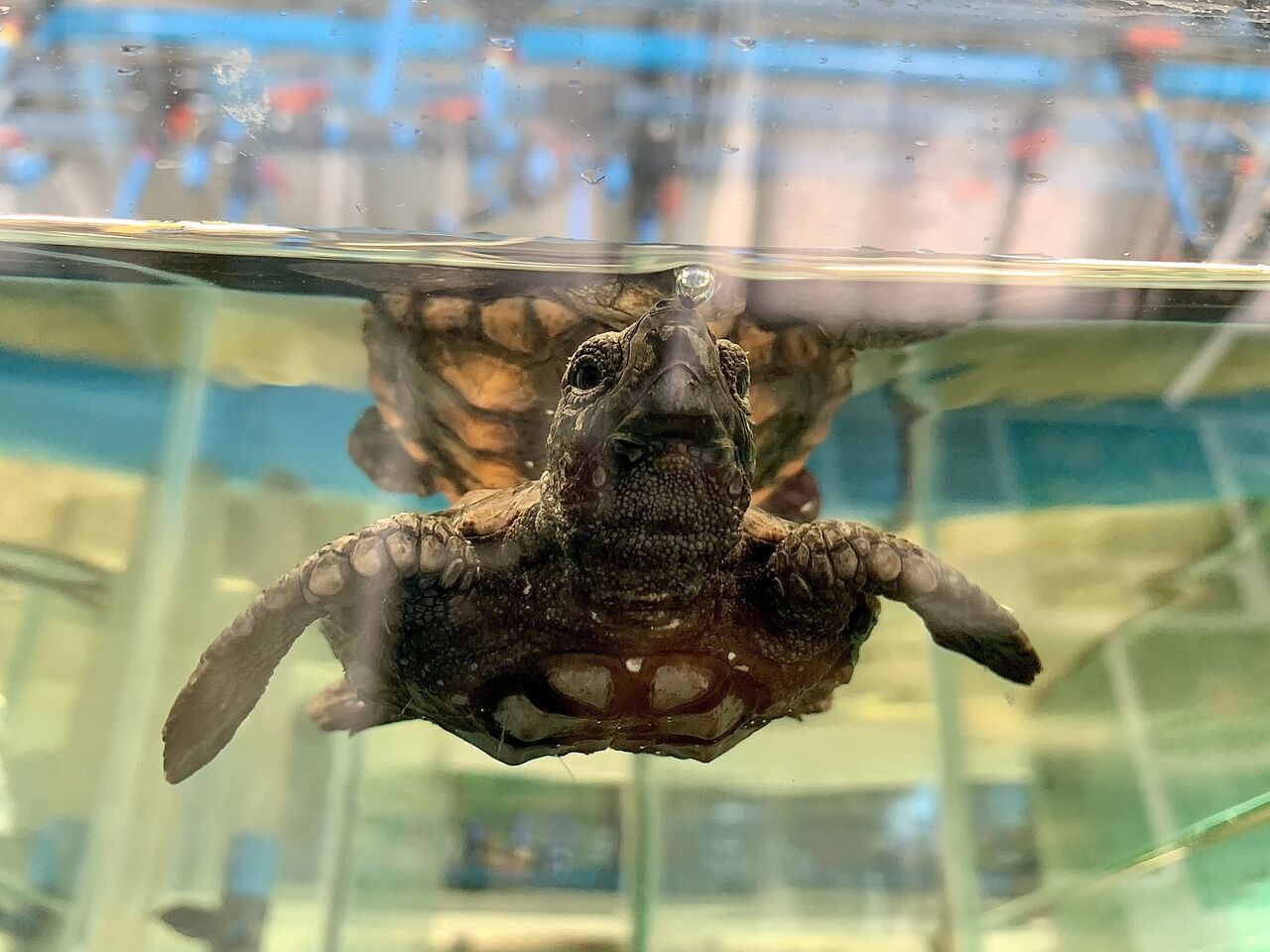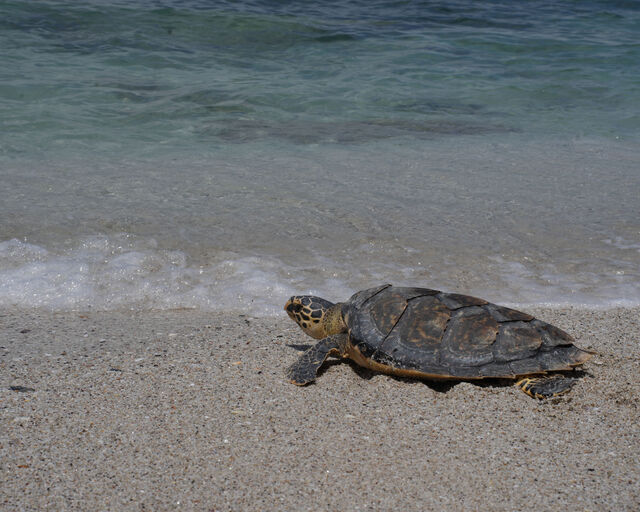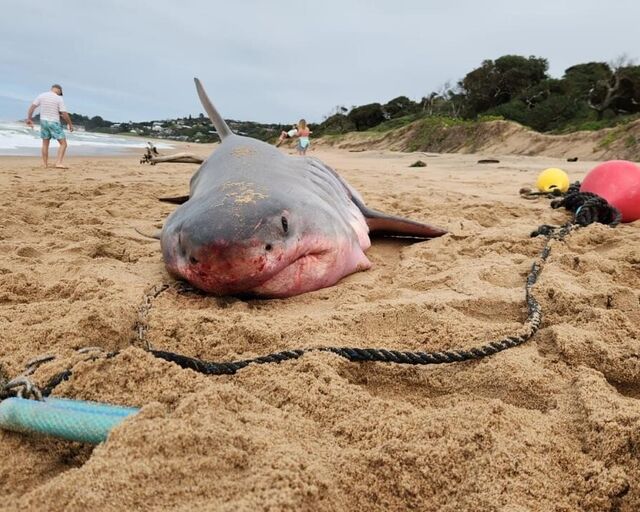When walking through the Turtle Rescue, Rehabilitation and Release Programme's recovery areas, it's easy to get wrapped up in the conservation stories affecting the precious endangered sea turtles being cared for by their amazing team. But, as important as those stories are, there are also a lot of interesting things going on - so let's look at five of the unexpectedly interesting things we learn from these turtles and their carers:
Turtle hatchlings don't know how to dive
Sea turtle hatchlings might look like tiny versions of their adult forms, but that doesn't mean they are completely developed! Young loggerhead turtles are very positively buoyancy - meaning they float very easily. This makes it easier for small, weak turtles to stay at the water's surface to avoid downing, but it does mean it is actually quite difficult for them to swim underwater to get to scraps of food.
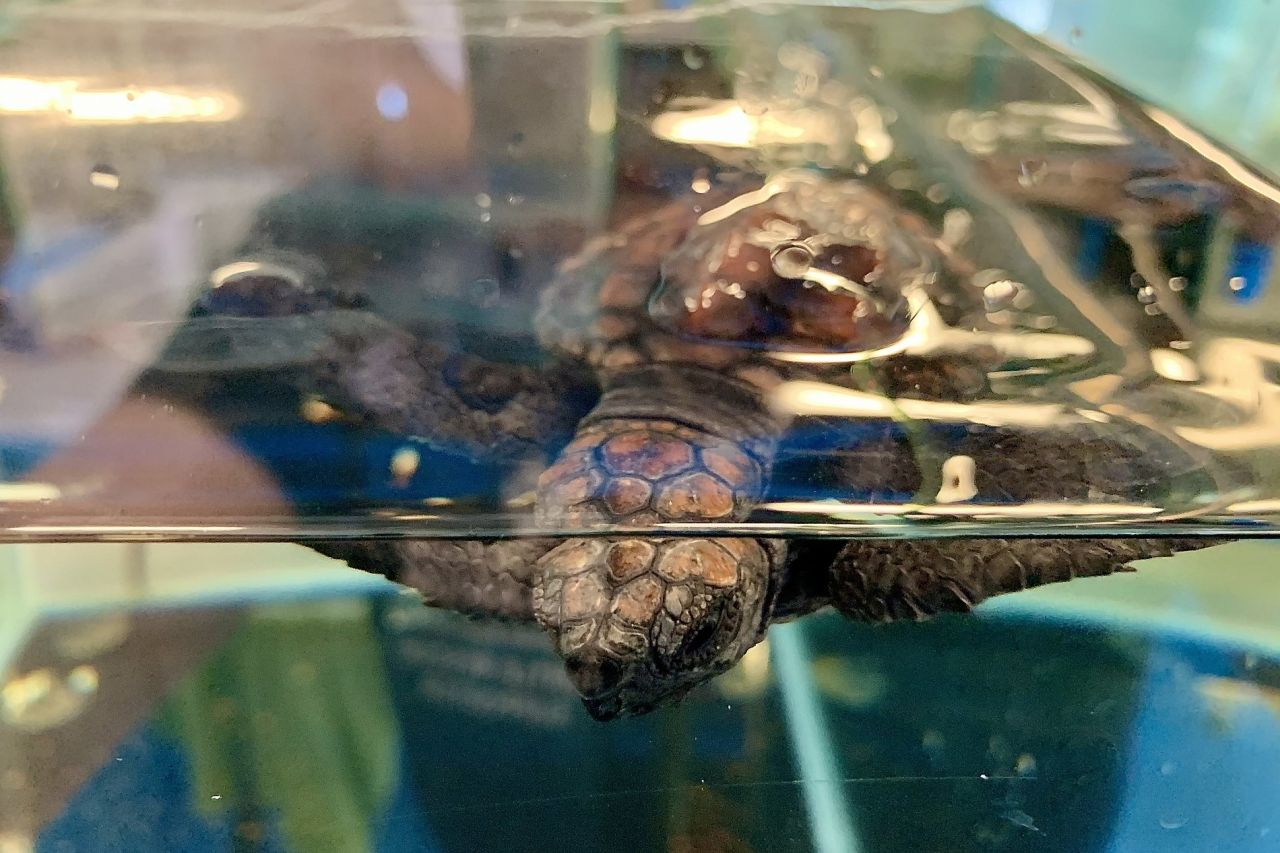
By the time a completely healthy turtle reaches a weight of about 500g, at around 6 months old, they should have developed the strength and technique needed to easily dive, and "hover" at a food source below the surface. Because the rescued hatchlings arriving at the Two Oceans Aquarium Foundation are often developmentally stunted or injured in some way as a result of sickness or trauma in the wild, the turtle team is able to monitor their underwater feeding ability as a way to gauge their strength and return to health.
Every rescued turtle has a whole ecosystem on its shell
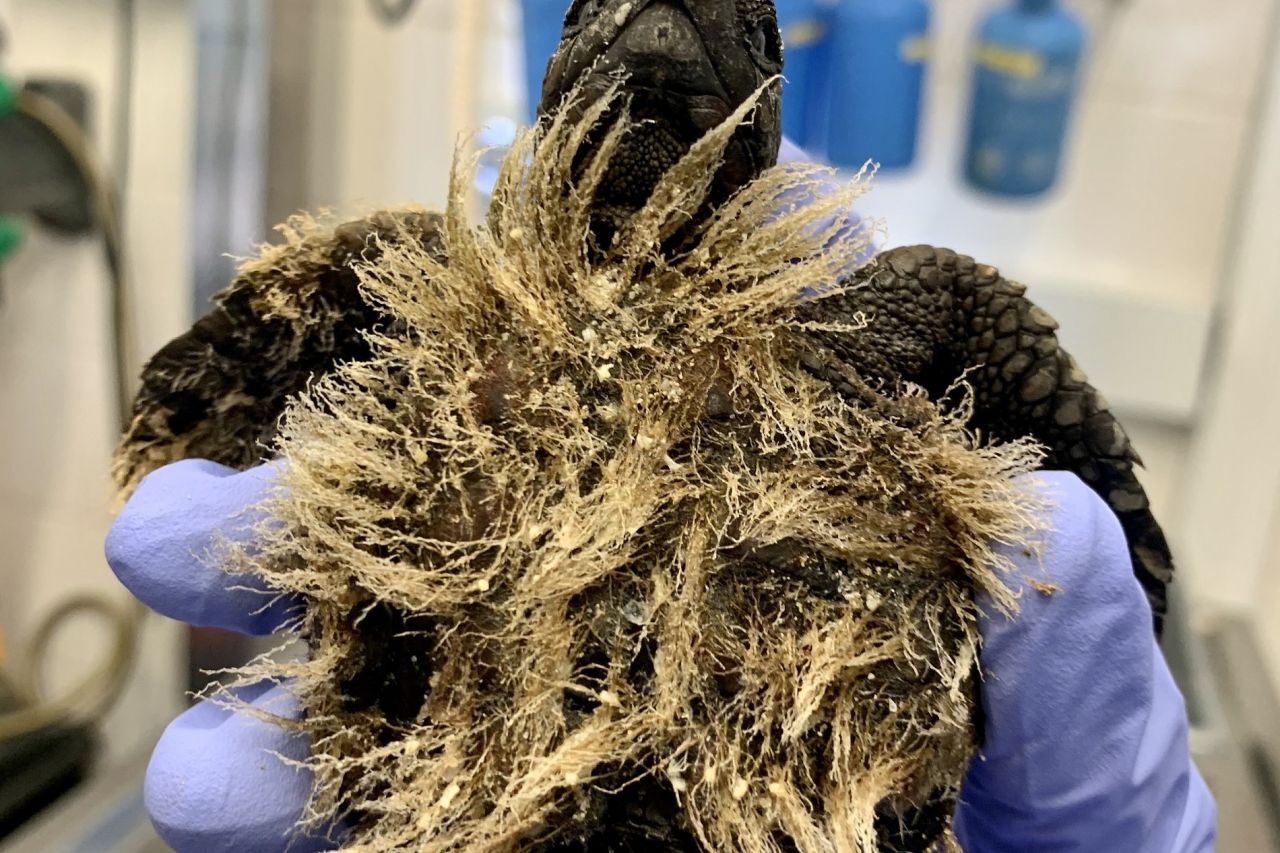
There are a few reasons for this: When swimming at the water's surface and kicking with their back flippers, this position reduces draft and helps them swim further with much less energy. Because their bodies are so much smaller than adults, hatchlings struggle to regulate their internal temperature - so flippers over their backs help them to warm up quicker. Finally, although their carapaces are strong enough to deter many predators, hatchlings lack the dexterity needed to dodge attached from birds, small fish and even other sea turtles, so positioning their flippers behind their backs is a good way to keep them out of harm's reach.
Turtles get X-rayed so we can see their poop
Moms and dads know when their little ones are having tummy trouble - bloating, runny tummies, crying and pointing to an owwie - kids make it easy for parents to know there is a problem. Unfortunately, while sea turtles have the same problems, we don't have any of those clearly visible indications that something is wrong!
Because turtles have very slow metabolisms, they can go weeks or even months without pooping. This makes it difficult to know if a new arrival at the rescue clinic is facing something serious, like gut stasis caused by injuries from ingested plastic, or is just a little stressed, but otherwise fine. Because of their hard shells, there is no easy way to see inside a turtle...
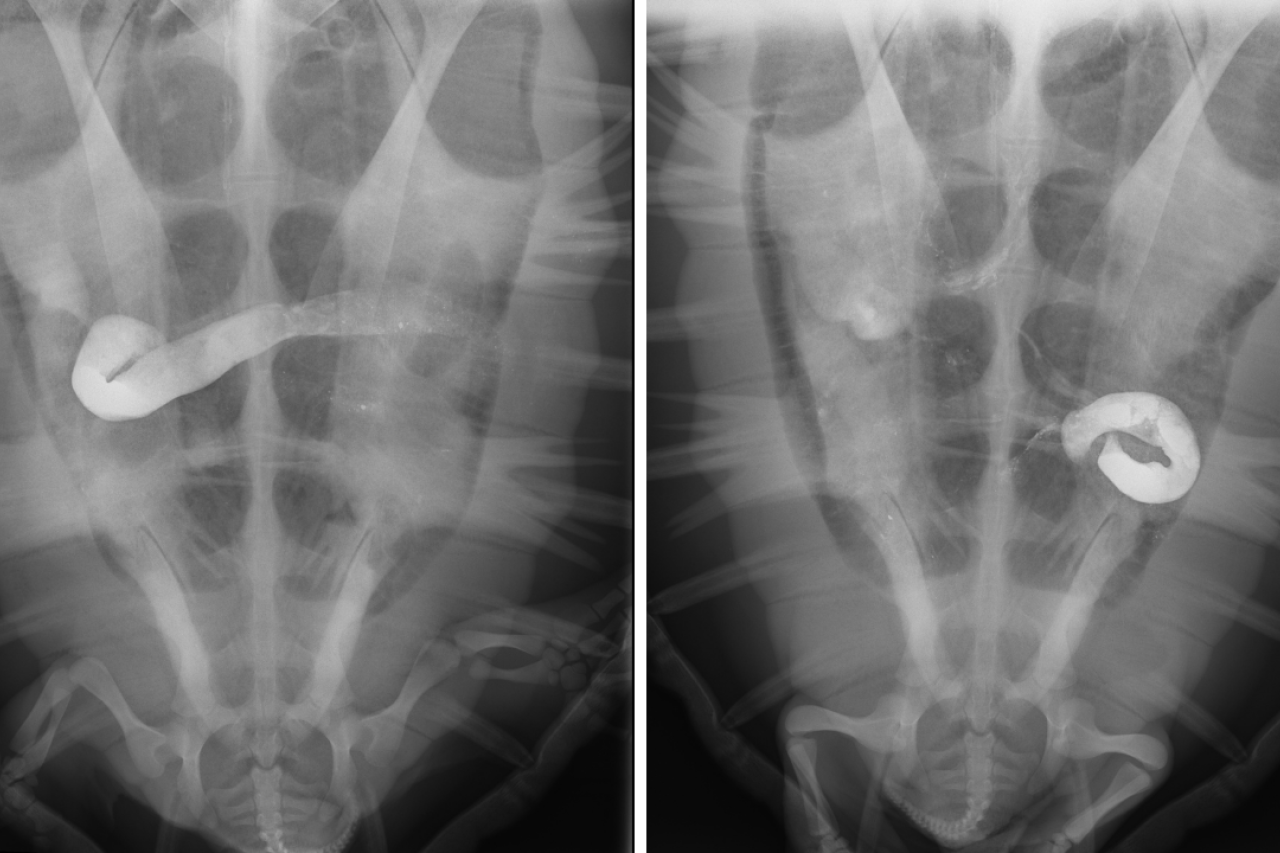
That's where X-rays come in. The Two Oceans Aquarium's veterinary clinic is at the disposal of the turtle team, who can use it to carry out a "contrast study" - a procedure where a turtle is fed a material (barium in our case) that reflects X-rays. This allows the team to see the fluid as it moves through a turtle's gut, and help find any internal injuries - allowing the team to make informed care decisions!
More than two thirds of all the sea turtles arriving at the Aquarium for rehabilitation have bellies full of plastic fragments. You can help them by choosing to refuse single-use plastic items - pick reusable shopping bags, glass bottles, and
Every turtle gets an a la carte meal!
There is one other way to see what is happening inside a turtle - watching its appetite. Once a turtle has been cleared of any obvious injuries or illness, the long task of monitoring its progress as it regains enough strength to be healed starts. Turtles can't tell us if something is wrong, so it's vitally important that their food intake is monitored and changes observed.
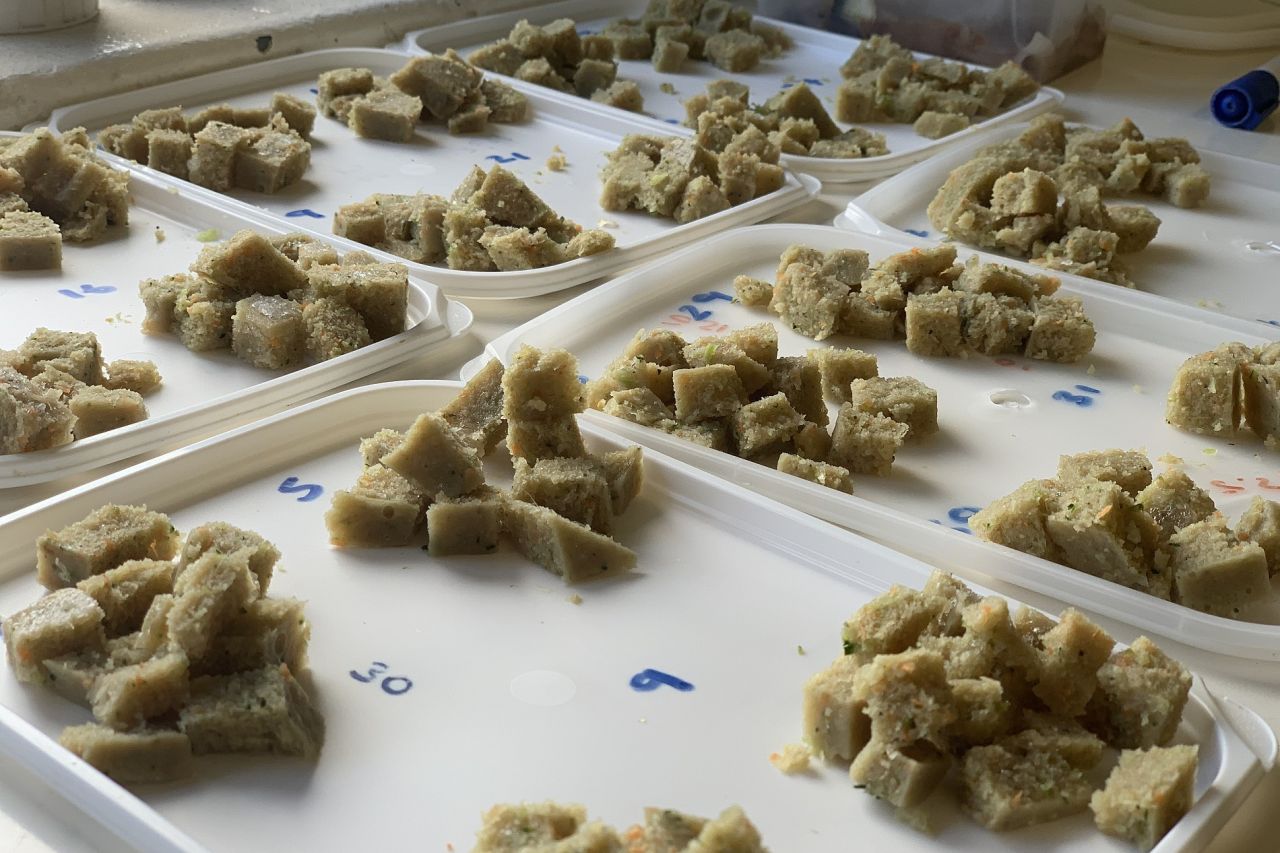
Sometimes the news is good and tiny hatching begins eating more and more as it rapidly grows. But, often a loss of appetite is an early sign of something negative, like a secondary infection associated with an injury a turtle had when rescued. Fortunately, the turtle team's vigilant interns are always careful to monitor food - so these changes are noticed quickly enough for action to be taken.
Diets are also customised to meet the needs of turtles - different sea turtle species receive different meals. Loggerheads are fed nutrient gel, fish, squid and seaweed, while leatherbacks are fed jellyfish. Green turtles are vegetarians as adults and get fed many of the same veggies humans eat, but if they are recovering from a traumatic injury, some squid or another protein source is used to supplement their diet.
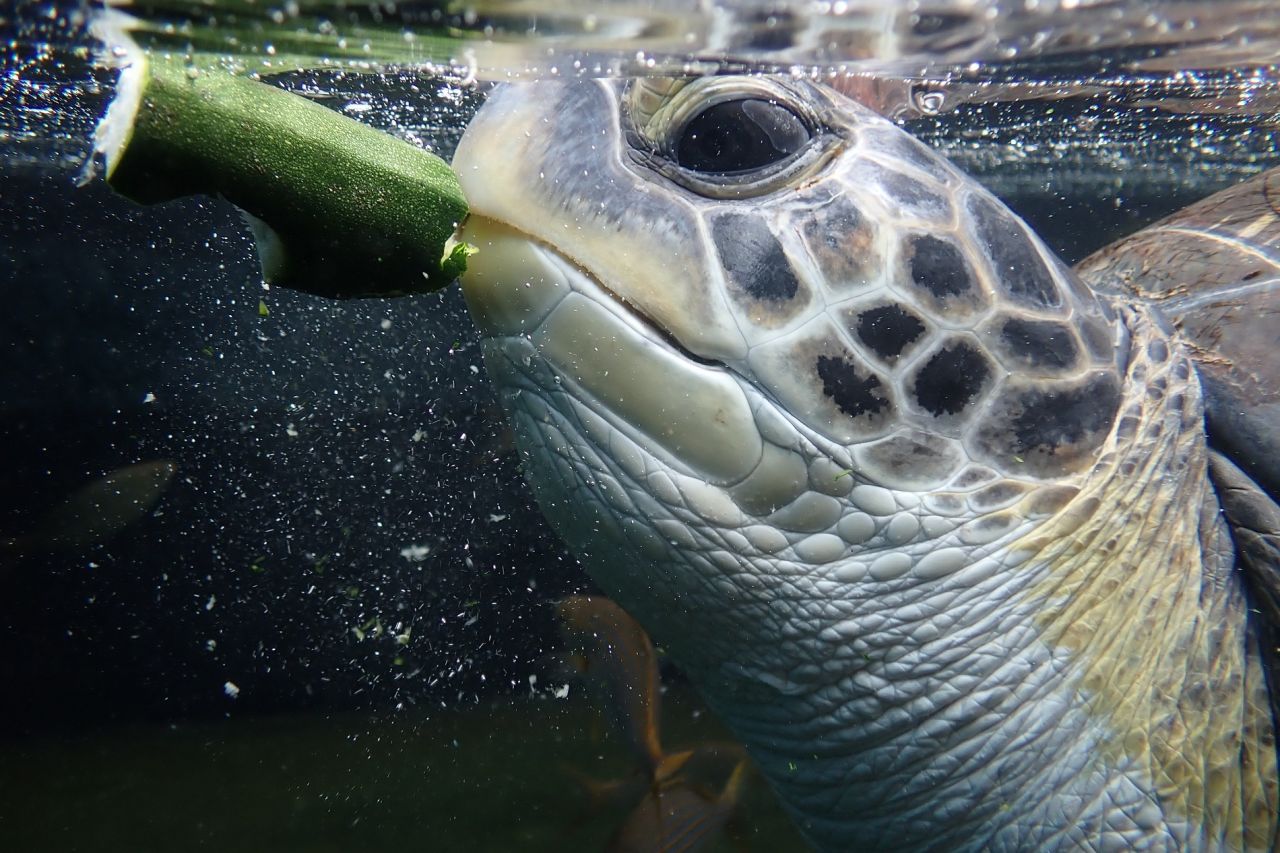
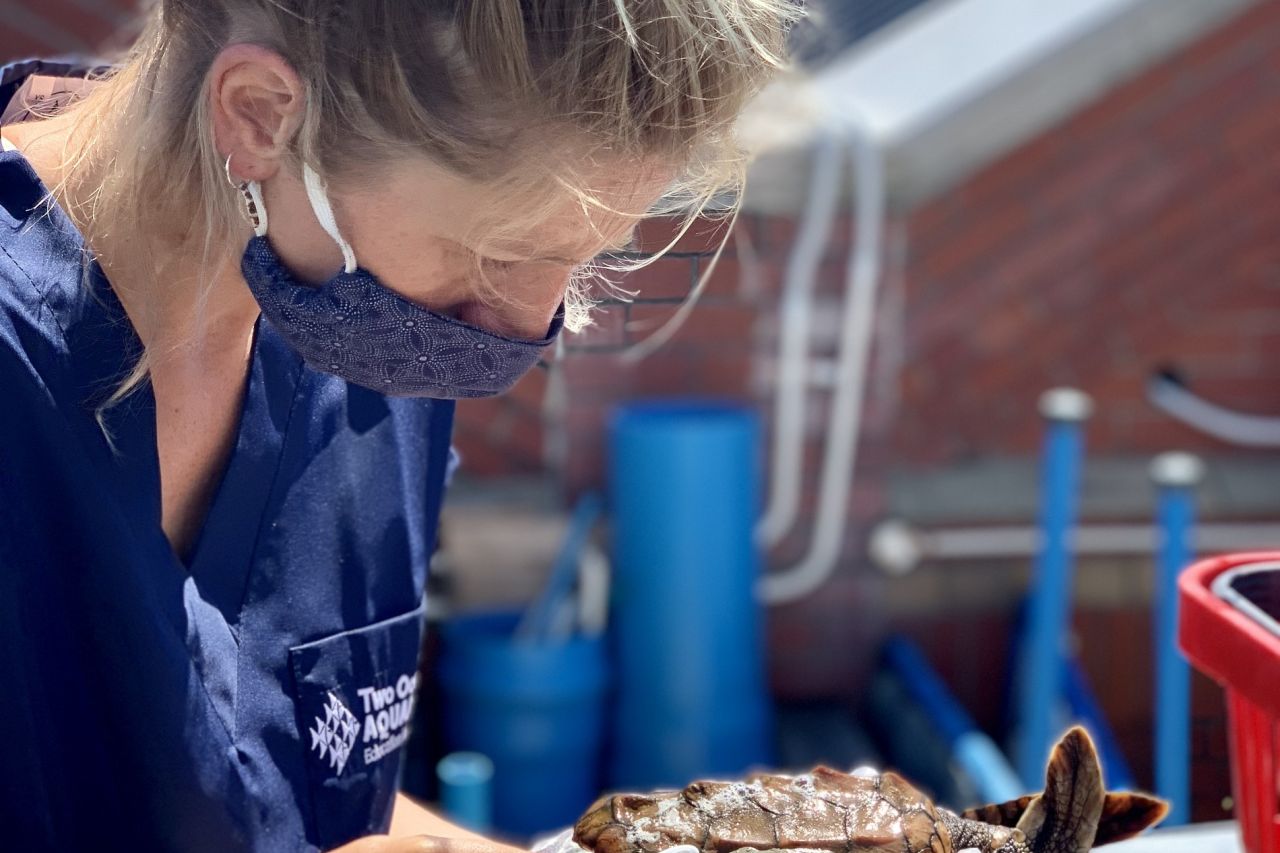
This incredible programme of the Two Oceans Aquarium Foundation is made possible by public support, and incredible partners like Consol Glass.
Related News
Sign up to our Newsletter
Receive monthly news, online courses and conservation programmes.
